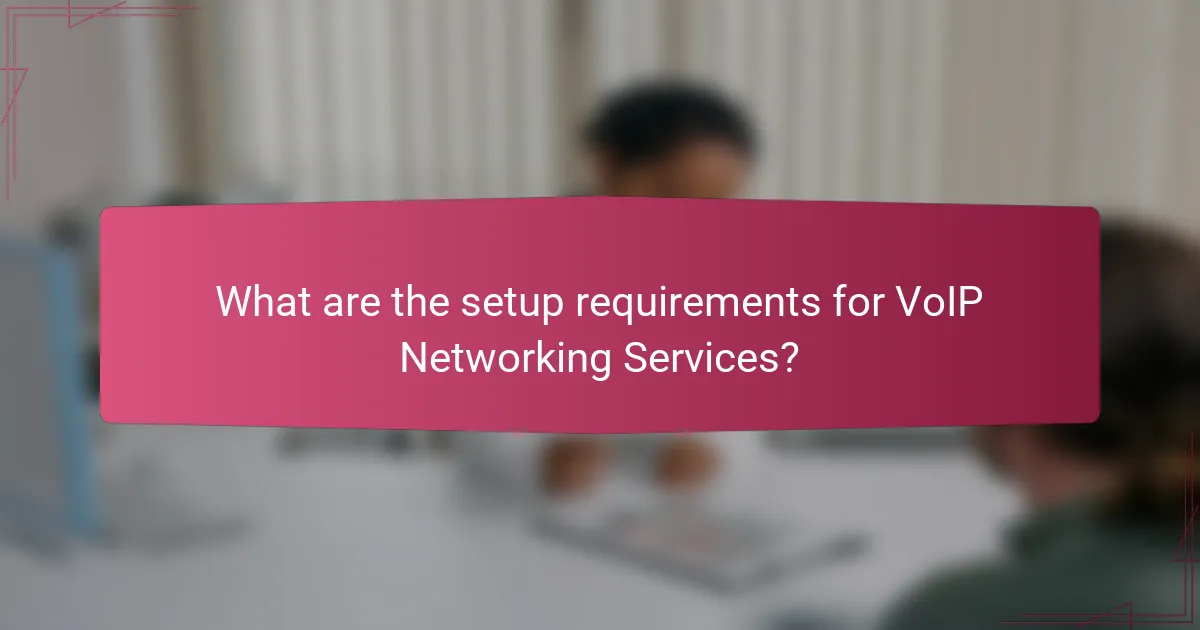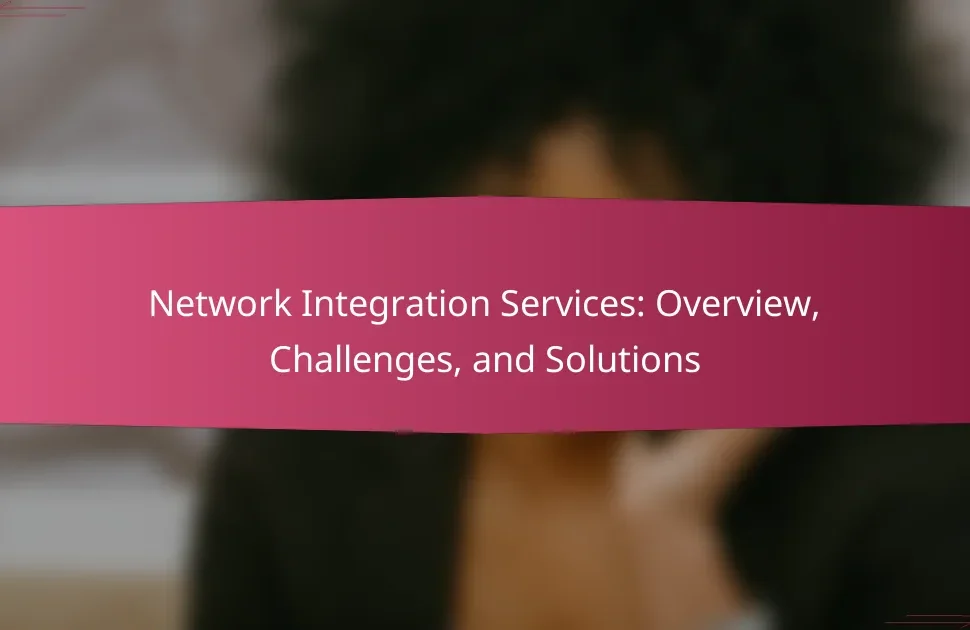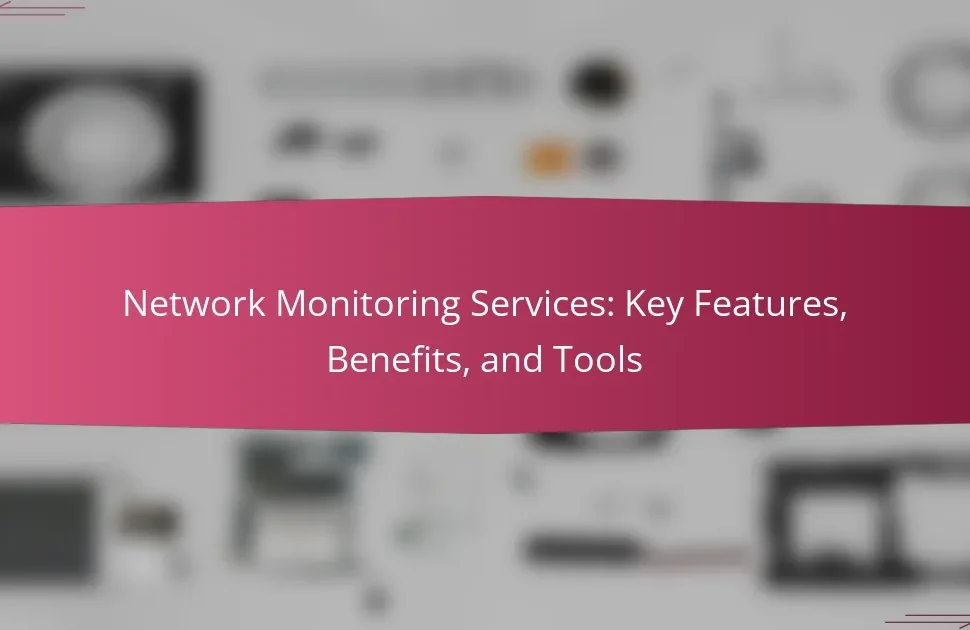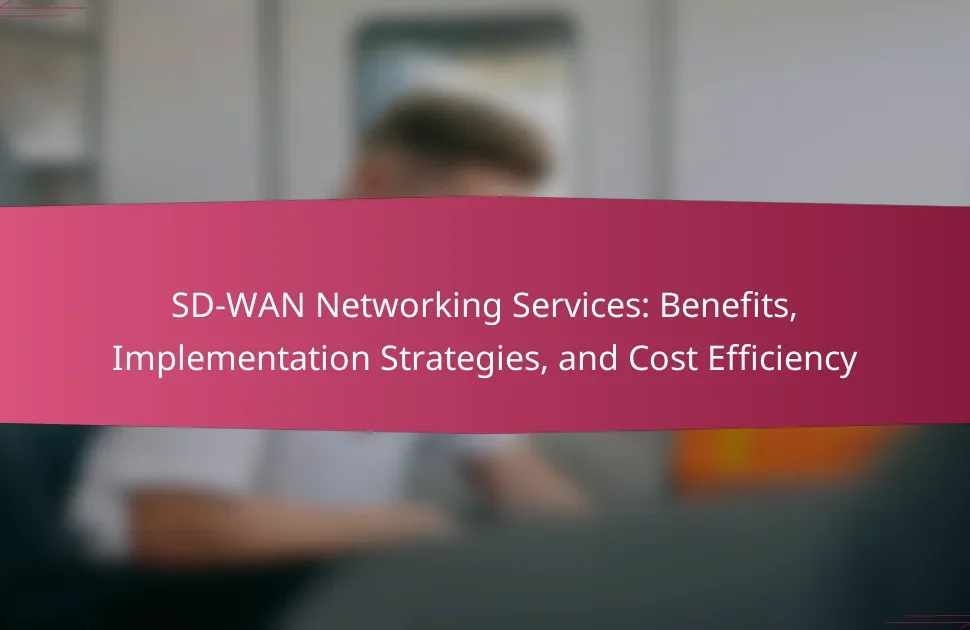
What are VoIP Networking Services?
VoIP networking services are communication services that use Voice over Internet Protocol technology. This technology allows voice calls to be transmitted over the internet instead of traditional telephone lines. VoIP services convert voice into digital signals for transmission. They enable features like call forwarding, voicemail, and video conferencing. VoIP services can significantly reduce communication costs. According to the Federal Communications Commission, VoIP can be up to 50% cheaper than traditional phone services. These services require a stable internet connection for optimal performance.
How do VoIP Networking Services function?
VoIP networking services convert voice into digital data for transmission over the internet. This process involves encoding voice signals into packets. These packets are then transmitted through IP networks. Upon reaching the destination, the packets are decoded back into audible sound. VoIP uses protocols like SIP and RTP for call setup and media transmission. This technology allows for real-time communication over various devices. VoIP services can reduce costs compared to traditional phone systems. According to a report by the Federal Communications Commission, VoIP can save users up to 50% on phone bills.
What technologies enable VoIP Networking Services?
VoIP networking services are enabled by several key technologies. These include Voice over Internet Protocol (VoIP) itself, which converts voice signals into digital data packets. Session Initiation Protocol (SIP) is another technology that manages the setup and teardown of voice calls. Additionally, Real-time Transport Protocol (RTP) is used for delivering audio and video over IP networks.
Codecs, such as G.711 and G.729, compress and decompress audio signals to optimize bandwidth usage. Quality of Service (QoS) technologies prioritize voice traffic to ensure clear communication. Network infrastructure, including routers and switches, supports VoIP by managing data flow efficiently.
Moreover, broadband internet access is essential for VoIP services to function effectively. These technologies collectively facilitate reliable and efficient VoIP networking services.
How does VoIP differ from traditional telephony?
VoIP differs from traditional telephony primarily in the method of transmitting voice calls. VoIP uses the Internet to send voice data as packets, while traditional telephony relies on circuit-switched networks. This difference allows VoIP to offer features like video calling and integration with other online services. Traditional telephony typically requires dedicated phone lines, which can be costly. VoIP can reduce costs significantly, as it often uses existing internet connections. According to the Federal Communications Commission, VoIP services can be up to 50% cheaper than traditional telephone services. Additionally, VoIP systems are generally more flexible and scalable, accommodating changes in user needs more easily.
What are the key benefits of VoIP Networking Services?
VoIP networking services provide cost savings, flexibility, and enhanced features. They typically reduce communication costs by up to 50% compared to traditional phone systems. VoIP services allow users to make calls over the internet, eliminating the need for separate phone lines. This technology enables remote work by allowing calls from any internet-enabled device. VoIP also offers advanced features like voicemail-to-email, call forwarding, and video conferencing. These features enhance productivity and improve communication efficiency. According to a report by the Federal Communications Commission, VoIP technology has significantly increased accessibility for businesses of all sizes.
How can VoIP reduce communication costs?
VoIP can reduce communication costs by utilizing the internet for voice calls instead of traditional phone lines. This technology eliminates the need for expensive long-distance charges. VoIP services typically offer lower monthly fees compared to standard phone services. According to a study by the Federal Communications Commission, VoIP can save businesses up to 50% on their communication expenses. Additionally, VoIP allows for free calls between users on the same network. This further reduces costs for organizations with multiple locations. The scalability of VoIP systems also minimizes expenses related to hardware and infrastructure. Overall, VoIP provides a cost-effective solution for both personal and business communications.
What impact does VoIP have on business productivity?
VoIP significantly enhances business productivity. It enables seamless communication, reducing downtime and increasing responsiveness. VoIP systems often include features like call forwarding and voicemail-to-email, streamlining workflows. According to a report by the International Telecommunication Union, businesses can save up to 50% on communication costs with VoIP. Enhanced collaboration tools, such as video conferencing, foster teamwork and improve project management. Additionally, VoIP allows remote work capabilities, which can lead to higher employee satisfaction and retention. These factors collectively contribute to improved overall efficiency and productivity in businesses.
How does VoIP enhance flexibility and scalability?
VoIP enhances flexibility and scalability by allowing businesses to easily adjust their communication infrastructure. Users can add or remove lines without significant hardware changes. This adaptability supports remote work and mobile access. VoIP systems can integrate with various devices, including smartphones and computers. Furthermore, they enable seamless communication across multiple locations. According to a report by MarketsandMarkets, the global VoIP market is projected to grow from $83.2 billion in 2020 to $102.5 billion by 2026. This growth reflects the increasing demand for flexible communication solutions.
What are the common applications of VoIP Networking Services?
Common applications of VoIP networking services include voice calls, video conferencing, and messaging. Businesses often use VoIP for cost-effective communication. VoIP allows for integration with other applications, enhancing productivity. Remote work has increased the demand for VoIP services. Features like call forwarding and voicemail-to-email are prevalent. VoIP also supports conference calls, making collaboration easier. Many educational institutions utilize VoIP for distance learning. Additionally, customer service centers implement VoIP for efficient call handling.
How is VoIP used in small businesses?
VoIP is used in small businesses to facilitate cost-effective communication. It allows for voice calls over the internet instead of traditional phone lines. This technology reduces communication expenses significantly. Small businesses benefit from features like call forwarding, voicemail-to-email, and conference calling. VoIP systems are also scalable, accommodating growth without major infrastructure changes. Furthermore, they can integrate with other business applications, enhancing productivity. According to a report by the Federal Communications Commission, VoIP can save businesses up to 50% on phone bills. Thus, VoIP is a strategic choice for small enterprises looking to optimize communication.
What role does VoIP play in remote work environments?
VoIP plays a crucial role in remote work environments by enabling seamless communication. It allows employees to make voice and video calls over the internet. This technology reduces costs compared to traditional phone systems. VoIP systems often include features like voicemail, call forwarding, and conferencing. These features enhance collaboration among remote teams. According to a study by the International Telecommunication Union, businesses using VoIP can save up to 50% on communication costs. VoIP also supports flexibility, allowing users to connect from various devices. This adaptability is essential for remote work dynamics.

What are the setup requirements for VoIP Networking Services?
The setup requirements for VoIP networking services include a reliable internet connection, VoIP-compatible hardware, and proper configuration. A stable internet connection with a minimum speed of 1 Mbps is recommended for optimal performance. VoIP-compatible hardware can include IP phones, analog telephone adapters, or softphones on computers. Network equipment such as routers and switches should support Quality of Service (QoS) to prioritize voice traffic. Additionally, a local area network (LAN) setup is necessary for connecting devices. Proper configuration of the VoIP service settings is essential for call routing and security. These requirements ensure effective communication and service quality in VoIP systems.
What equipment is needed for VoIP implementation?
To implement VoIP, essential equipment includes IP phones, a reliable internet connection, and a VoIP gateway. IP phones convert voice into digital signals for transmission. A stable internet connection ensures quality calls and reduces latency. A VoIP gateway connects traditional phone lines to the VoIP network. Additionally, a router with Quality of Service (QoS) settings prioritizes voice traffic. Network switches may be necessary for connecting multiple devices. Power over Ethernet (PoE) switches can simplify installation by providing power to IP phones. Lastly, a firewall is important for securing the VoIP network against threats.
What types of VoIP phones are available?
There are several types of VoIP phones available. The main categories include hardware VoIP phones, softphones, and mobile VoIP apps. Hardware VoIP phones are physical devices designed specifically for VoIP calls. They often resemble traditional telephones but connect to the internet. Softphones are software applications installed on computers or laptops. They allow users to make VoIP calls using a microphone and speakers. Mobile VoIP apps enable users to make calls from smartphones. These apps utilize mobile data or Wi-Fi for connectivity. Each type serves different user needs and preferences.
How does network infrastructure affect VoIP setup?
Network infrastructure significantly impacts VoIP setup by determining call quality and reliability. A robust network ensures adequate bandwidth for voice data transmission. Insufficient bandwidth can lead to call drops and poor audio quality. Latency, jitter, and packet loss are critical factors influenced by network conditions. High latency can cause delays in conversation, while jitter affects the timing of voice packets. Network topology also plays a role; a well-structured network minimizes congestion. Quality of Service (QoS) settings prioritize voice traffic over other types of data. Implementing QoS can enhance VoIP performance, ensuring clarity and stability during calls. Therefore, proper network infrastructure is essential for effective VoIP communication.
What internet requirements are necessary for VoIP?
VoIP requires a stable internet connection with sufficient bandwidth. A minimum of 100 kbps upload and download speed per call is recommended. Higher bandwidth is needed for multiple simultaneous calls. Latency should be less than 150 milliseconds for optimal performance. Jitter should be minimal, ideally under 30 milliseconds. Packet loss should be less than 1% to maintain call quality. Quality of Service (QoS) settings can prioritize VoIP traffic on the network. These requirements ensure clear and uninterrupted voice communication.
How does bandwidth influence VoIP call quality?
Bandwidth directly influences VoIP call quality by determining the amount of data that can be transmitted over the network. Higher bandwidth allows for clearer audio, reduced latency, and fewer dropped calls. VoIP typically requires a minimum of 100 kbps per call for good quality. Insufficient bandwidth can lead to choppy audio and delays. A study by the Federal Communications Commission noted that bandwidth limitations can significantly degrade call quality. Therefore, ensuring adequate bandwidth is essential for optimal VoIP performance.
What should be considered for network security in VoIP?
Network security in VoIP should consider encryption, authentication, and firewall protection. Encryption secures voice data during transmission. This prevents eavesdropping and data interception. Authentication verifies user identities to prevent unauthorized access. Firewalls protect VoIP systems from external threats. They filter out malicious traffic targeting VoIP services. Additionally, regular software updates are essential. They patch vulnerabilities and enhance security measures. Monitoring network traffic helps detect anomalies and potential breaches. Implementing Quality of Service (QoS) ensures voice quality while maintaining security. These measures collectively safeguard VoIP communications from various security threats.

How can businesses analyze the costs associated with VoIP Networking Services?
Businesses can analyze the costs associated with VoIP Networking Services by evaluating multiple factors. They should start by assessing the initial setup costs, including hardware and software expenses. Ongoing operational costs, such as subscription fees and maintenance, must also be considered. Additionally, businesses should factor in potential savings from reduced phone bills and improved productivity.
Comparing different VoIP service providers can help identify the best pricing models. Analyzing call quality and reliability is essential, as lower costs may come with decreased service quality. Businesses should also consider any hidden fees, such as charges for extra features or international calls.
Data from industry reports indicates that businesses can save up to 50% on communication costs by switching to VoIP. This makes it crucial to perform a comprehensive cost-benefit analysis. By systematically evaluating these elements, businesses can gain a clear understanding of their VoIP networking costs.
What factors contribute to the overall cost of VoIP services?
The overall cost of VoIP services is influenced by several key factors. These include equipment costs, which encompass phones, routers, and adapters. Monthly subscription fees also contribute significantly to the total cost. Usage patterns play a role, as higher call volumes can lead to increased charges. Network infrastructure quality affects performance and reliability, impacting costs as well. Additional features, such as voicemail or call forwarding, may incur extra fees. Lastly, provider pricing structures can vary widely, affecting overall expenses. According to a report by the Federal Communications Commission, businesses can save up to 50% on communication costs by switching to VoIP services.
How do subscription models vary among VoIP providers?
Subscription models among VoIP providers vary significantly in pricing, features, and flexibility. Some providers offer tiered pricing based on usage, while others have flat-rate plans. For example, companies like RingCentral provide unlimited calling with additional features at a higher price. In contrast, providers like Ooma may offer lower base rates with pay-per-use options for international calls. Additionally, some VoIP services include advanced features such as video conferencing and team messaging in their subscriptions, while others charge extra for these functionalities. According to a report by TechRadar, the average monthly cost for business VoIP services ranges from $20 to $50 per user, depending on the features included.
What hidden costs should businesses be aware of?
Businesses should be aware of hidden costs associated with VoIP networking services. These costs can include unexpected fees for installation and setup. Additional charges may arise from ongoing maintenance and support services. Businesses might also face costs for upgrades or additional features that were not initially disclosed. Network downtime can lead to lost revenue, representing another hidden cost. Furthermore, potential costs from inadequate bandwidth can affect service quality. Finally, businesses should consider costs related to employee training on new systems. Each of these factors can significantly impact the overall cost of VoIP services.
How does VoIP compare to traditional phone systems in terms of cost?
VoIP is generally more cost-effective than traditional phone systems. VoIP services often have lower monthly fees and reduced long-distance call charges. Traditional phone systems usually require expensive hardware and installation costs. VoIP can be set up using existing internet connections, minimizing infrastructure expenses. According to a study by the Federal Communications Commission, VoIP can save businesses up to 50% on their phone bills. Additionally, VoIP offers features like voicemail-to-email at no extra cost, while traditional systems may charge for similar services. Overall, VoIP provides significant savings and flexibility compared to traditional phone systems.
What are the long-term savings of switching to VoIP?
Switching to VoIP can lead to significant long-term savings. Businesses can save up to 50% on monthly phone bills. VoIP eliminates the need for traditional phone lines, reducing infrastructure costs. Long-distance call rates are often lower with VoIP, resulting in further savings. The technology also allows for scalability, meaning businesses can add lines without substantial costs. Maintenance costs are reduced as VoIP systems require less hardware. Additionally, many VoIP providers offer bundled services, which can lower overall expenses. According to a study by TechTarget, companies that switch to VoIP report an average savings of $1,000 per employee annually.
How can businesses budget effectively for VoIP services?
Businesses can budget effectively for VoIP services by assessing their communication needs and understanding associated costs. Start by evaluating the number of users and required features. This helps in selecting an appropriate VoIP plan. Next, consider the initial setup costs, including hardware and installation. Ongoing expenses like monthly service fees should also be calculated. Additionally, factor in potential costs for training employees on the new system. Research shows that companies can save up to 50% on communication costs by switching to VoIP compared to traditional phone systems. Monitoring usage and adjusting plans as necessary can further optimize the budget.
What are some best practices for optimizing VoIP usage?
To optimize VoIP usage, prioritize a stable internet connection. A wired connection is preferred over Wi-Fi to reduce latency. Use Quality of Service (QoS) settings on routers to prioritize VoIP traffic. Regularly update VoIP software to benefit from performance enhancements. Implement network monitoring tools to identify and resolve issues promptly. Use dedicated bandwidth for VoIP calls to minimize interference. Ensure proper configuration of VoIP devices for optimal performance. These practices enhance call quality and reduce dropped calls.
How can businesses troubleshoot common VoIP issues?
Businesses can troubleshoot common VoIP issues by systematically addressing potential problems. First, they should check the internet connection for stability and speed. A minimum of 1 Mbps per call is recommended for optimal performance. Next, they can inspect network equipment such as routers and switches for proper configuration. Ensuring Quality of Service (QoS) settings can prioritize VoIP traffic.
Additionally, businesses should update VoIP software and firmware to the latest versions. This can resolve compatibility issues and improve performance. If call quality is poor, adjusting bandwidth allocation may help. Monitoring tools can also identify latency, jitter, and packet loss, which are critical for VoIP performance.
Finally, consulting with the VoIP service provider can provide further insights into persistent issues. Providers often have specific troubleshooting steps based on their systems.
What tips can enhance the performance of VoIP services?
To enhance the performance of VoIP services, prioritize network quality and bandwidth management. Ensure a stable internet connection with sufficient bandwidth, ideally at least 100 kbps per call. Implement Quality of Service (QoS) settings on routers to prioritize VoIP traffic. Use wired connections instead of Wi-Fi to reduce latency and packet loss. Regularly update VoIP hardware and software to benefit from performance improvements. Monitor network performance with tools to identify and resolve issues quickly. Consider using a dedicated VoIP service provider known for reliability and support. These measures can significantly improve call clarity and reduce disruptions.
VoIP Networking Services utilize Voice over Internet Protocol technology to facilitate voice communication over the internet, offering features such as call forwarding, voicemail, and video conferencing. This article covers the functionality, enabling technologies, and key benefits of VoIP, including significant cost savings and enhanced business productivity. It also outlines the setup requirements, necessary equipment, and considerations for network security, while providing a detailed cost analysis for businesses looking to switch from traditional phone systems. Additionally, the article examines common applications of VoIP in various settings, particularly in remote work environments and small businesses.




